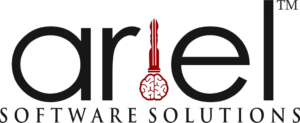
In today’s fast-paced industrial landscape, particularly in sectors like construction, energy, and equipment rental, every asset, vendor interaction, and document trail matters. These industries depend heavily on accurate records and accountability, yet many still struggle with fragmented systems, manual processes, and a lack of centralized traceability. This is where asset management software for construction becomes essential, offering a streamlined solution to manage assets, vendors, and documentation in one unified backend.
Imagine this scenario: An excavator rented weeks ago is returned late. There’s confusion about when it left, who signed off on it, which vendor provided it, and whether additional charges apply. Multiply this by dozens of vendors, hundreds of assets, and rotating field teams, and it quickly becomes a logistical nightmare, one that could have been avoided with robust asset management software for construction and integrated heavy equipment tracking software in place.
This is where backend traceability comes into play. It’s not just about tracking equipment or logging invoices, it’s about creating a system where every transaction, interaction, and movement is connected, auditable, and actionable. Let’s dive deeper into what makes traceability such a critical feature of backend design and how companies can future-proof their operations by investing in smarter systems like construction inventory management software that prioritize real-time intelligence.
The Root of Operational Chaos
The pain isn’t always obvious until it’s too late:
- Scattered Records: Paper-based logs, disconnected spreadsheets, and siloed databases not supported by modern asset management software for construction.
- Lack of Standardization: Inconsistent naming, misfiled invoices, and unclear vendor details make construction inventory management software a necessary tool.
- Zero Real-Time Visibility: No idea where an asset is, who approved what, or how much was billed, issues that heavy equipment tracking software can solve.
- Manual Dependencies: Systems that rely on human memory, backtracking emails, or hunting through chat logs instead of streamlined asset management software for construction.
These issues lead to revenue loss, compliance risks, project delays, and strained vendor relationships. Worse, they erode trust internally and externally.
What Traceability Really Means in Industrial Operations
True traceability isn’t just a spreadsheet with timestamps. It’s a living, breathing ecosystem that can answer questions like:
- Where is the asset?
- What happened to it along the way?
- Who was responsible at each step?
And not just GPS-level tracking. We’re talking about full lifecycle visibility that heavy equipment tracking software and construction inventory management software can offer:
- Who approved the equipment rental?
- What were the vendor terms and payment milestones?
- When was the handoff completed and by whom?
- Is there a digital log of overtime use and maintenance records?
This depth of clarity brings accountability and enables faster, smarter decisions, hallmarks of a strong asset management software for construction framework.
Backend Systems: The Unsung Heroes
Building such traceability starts with backend systems that are designed with intentionality. These systems must do more than store data, they must connect data through well-structured relational databases like PostgreSQL, ensuring seamless traceability. And they do so best when integrated with:
- Relational Databases: Tie vendors to assets, contracts to invoices, and operators to time logs through asset management software for construction.
- Event Logging: Every transaction, update, or handoff is timestamped and user-attributed, core to any construction inventory management software.
- Search & Filter Capabilities: Teams can retrieve exact information in seconds with heavy equipment tracking software.
- Data Centralization: One version of the truth, accessible across departments, is exactly what modern asset management software for construction delivers.
When systems are designed to remember, humans no longer have to.
A Real-World Illustration
An energy services firm dealing with equipment rental and subcontractors was drowning in miscommunication. Equipment arrived late, invoices didn’t match actual usage, and operations frequently stalled due to missing paperwork.
They implemented a custom backend solution using asset management software for construction along with heavy equipment tracking software. Key features included:
- Smart Document Linking: Every invoice and contract was linked to a unique asset and vendor.
- Lifecycle Views: From vendor procurement to equipment return, every interaction was logged using construction inventory management software.
- Operational Dashboards: Real-time views of pending, active, and completed transactions.
Operational visibility isn’t just about what you see, it’s about how you interact with your systems. For a closer look at how intuitive UI and real-time dashboards can simplify operations, explore Simplifying Factory Management with Interactive Interfaces: A Game-Changer for Industry 4.0. This post breaks down how interactive backend environments can drive better control across factory floors.
The results were profound:
- Invoice disputes dropped by 80%.
- Asset availability improved by 30%.
- Vendor performance became measurable and negotiable.
Key Features of a Traceability-Driven Backend
To truly deliver value, the backend system must include:
- Audit Trails: Immutable logs of who did what, when, built into advanced asset management software for construction.
- Vendor Relationship Mapping: A history of vendor interactions, delivery timelines, and invoice behavior tracked via heavy equipment tracking software.
- Digital Documentation: Central repositories for agreements, inspection records, and approvals in construction inventory management software.
- User Access Control: Only the right people can edit or view certain records.
- Change Histories: Know what changed, when, and why.
These aren’t “features” anymore. They’re necessities in a post-paper world. And only a solid asset management software for construction ensures they’re part of your workflow.
Want to reduce costly documentation errors and avoid compliance pitfalls? Discover how document recognition technology helps eliminate supply chain missteps in our blog Avoid Costly Manufacturing Setbacks: How OCR Boosts Industrial Automation to Prevent Supply Chain Errors. It explains how OCR enhances traceability and automation across industries that rely heavily on accuracy.
The Business Impact: Benefits That Go Beyond Convenience
Let’s translate technical capability into real-world value:
- Revenue Protection: Fewer missed invoices, billing errors, and untracked overtime, thanks to construction inventory management software.
- Vendor Accountability: Easily identify underperforming or overcharging vendors using insights from asset management software for construction.
- Legal Security: Dispute resolution backed by airtight logs and signed digital records from heavy equipment tracking software.
- Efficiency: Operations teams spend less time tracking paperwork and more time executing.
- Customer Trust: When clients ask for proof, delivery logs, or compliance records, you have them because construction inventory management software centralizes it all.o
If improving vendor performance and building smarter vendor relationships is a priority for your business, you’ll want to read our blog, AI-Powered Vendor Management System: Revolutionizing Vendor Relationships and Payments. It explores how artificial intelligence can automate vendor assessments, payment cycles, and contract visibility, a perfect complement to traceability-focused backend systems.
What Happens When You Don’t Prioritize Traceability?
- You lose money. Simple.
- You compromise safety.
- You erode relationships with vendors and clients.
- You risk compliance violations and audits.
It’s not just about convenience. It’s about control. And that control comes through asset management software for construction that’s backed by modern heavy equipment tracking software and unified construction inventory management software.
Beyond GPS: Traceability That’s Document-Driven
While GPS tracking is useful, it doesn’t capture the full picture. The modern backend needs to:
- Track who generated an invoice and when it was approved.
- Record all equipment handovers and by whom.
- Provide timelines of rentals, returns, and maintenance.
- Identify billing mismatches with usage logs.
This is not just digital logistics, it’s intelligent operations powered by construction inventory management software and advanced asset management software for construction.
Future-Proofing with Backend Intelligence
Traceability is just the start. Forward-thinking companies are exploring:
- IoT Integration: Equipment that logs usage automatically via heavy equipment tracking software.
- AI-Driven Invoicing: Flag discrepancies before they become disputes with asset management software for construction.
- Predictive Maintenance Alerts: Based on equipment history from construction inventory management software.
- Vendor Scorecards: Auto-generated from past performance.
Traceability becomes the foundation of automation and insight.
Final Thoughts: Systems That Remember, So You Don’t Have To

Operational clarity isn’t a luxury, it’s a competitive edge. In industries with tight margins and high risk, the ability to pinpoint what happened, when, and by whom is a game-changer.
Backend systems with built-in traceability empower teams, protect revenue, and ensure nothing slips through the cracks. It’s time we stop treating documentation as an afterthought and start seeing it as strategic infrastructure.
At Ariel Software Solutions, we specialize in building intelligent backend architectures that aren’t just functional, they’re future-ready. Whether you’re in construction, energy, or equipment management, our platforms are designed to centralize your data, automate workflows, and provide complete operational visibility from the first touchpoint to the final invoice, all backed by cutting-edge asset management software for construction, heavy equipment tracking software, and construction inventory management software.
The companies that prioritize traceability today will become the trusted leaders of tomorrow. Because in a world of operational fog, clarity wins.
Frequently Asked Questions (FAQs)
1. Why is traceability critical in construction and equipment-heavy industries?
Traceability ensures every asset, transaction, and vendor interaction is logged and accessible. It helps prevent delays, billing issues, and compliance risks by making sure nothing slips through the cracks.
2. How does asset management software for construction improve operational efficiency?
It centralizes data across assets, vendors, and documentation, reducing manual tracking. Teams can instantly access real-time information, speeding up decision-making and minimizing project downtime.
3. What problems can arise without proper traceability systems in place?
Lack of traceability can lead to lost equipment, invoice disputes, missed deadlines, and strained vendor relationships. It also makes audits and compliance checks much harder to manage.
4. How does backend design support better traceability?
A well-designed backend connects data across systems, linking assets to vendors, tracking approvals, and logging every interaction. This foundation is what makes traceability reliable and actionable.
5. What should companies look for in an asset management solution?
Look for features like audit trails, real-time tracking, centralized documentation, and role-based access. The best asset management software for construction should simplify workflows while ensuring full visibility.




